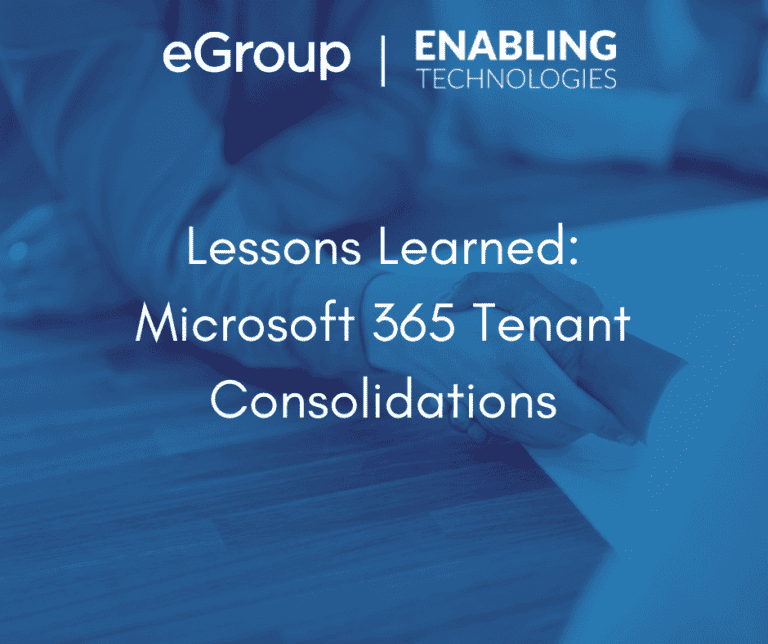We hope this kind of outline is useful for M&A planners from the people, process, AND technology perspective. Feel free to reach out to get advice about your situation.
Lessons Learned: Microsoft 365 Tenant Consolidations

When two organizations merge, chances are a Microsoft 365 tenant consolidation will be in order. A panel of experts from our team with experience in M&A consolidations share some important success factors in this video. A written summary of the takeaways can be found below the video.
Summary
We hope this kind of outline is useful for M&A planners from the people, process, AND technology perspective. Feel free to reach out to get advice about your situation.
Contact our team of experts today who have years of experience and know all of the “minefields” to prevent missteps.

CTO & VP of Strategy - eGroup | Enabling Technologies